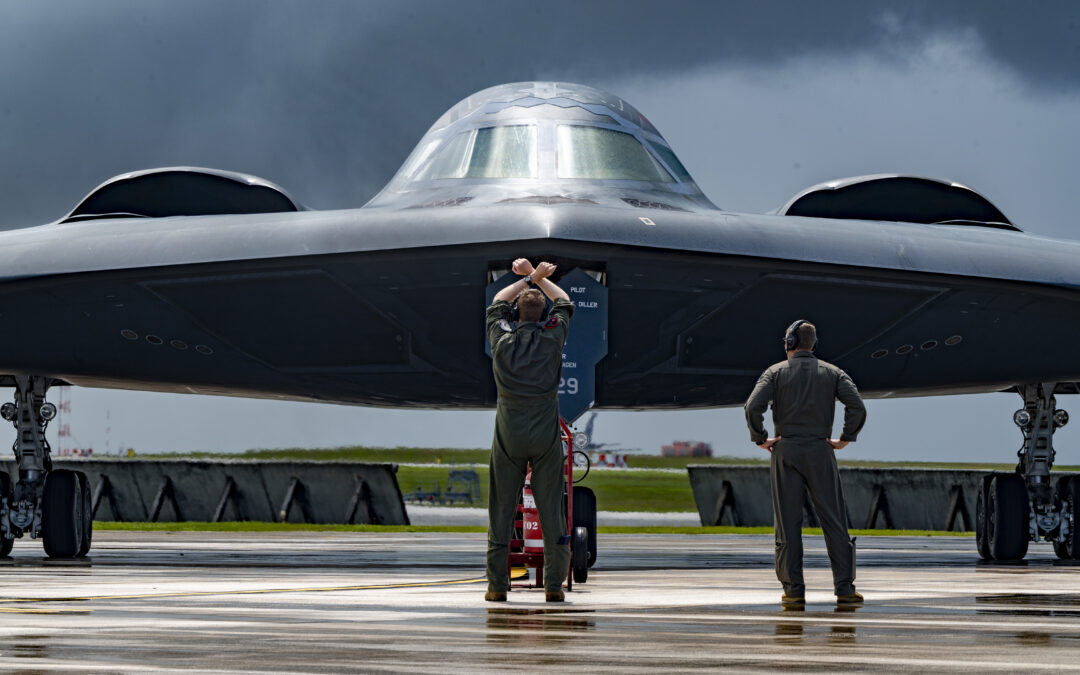B-2 Spirit Bomber Pilots Face 30-Hour Missions: A Gripping Look Inside the Cockpit
 In an extraordinary display of human endurance and military precision, B-2 Spirit bomber pilots are pushing the limits of flight with missions that can stretch up to 40 hours without a single break. As they soar through the skies, these elite aviators face a unique challenge: how to eat, stay alert, and maintain peak performance in one of the most advanced yet cramped cockpits in the world.
In an extraordinary display of human endurance and military precision, B-2 Spirit bomber pilots are pushing the limits of flight with missions that can stretch up to 40 hours without a single break. As they soar through the skies, these elite aviators face a unique challenge: how to eat, stay alert, and maintain peak performance in one of the most advanced yet cramped cockpits in the world.

With no cabin crew to serve meals or restaurants to stop at, B-2 pilots must rely on meticulously planned food strategies that are as critical to their mission as navigation and weapon systems. Each meal is carefully chosen to provide sustained energy without causing discomfort or distraction. Think turkey sandwiches, instant oatmeal, and protein bars packed into space no larger than a backpack. Hydration is also a top priority, as the dry cockpit air can lead to dehydration and headaches.

The stakes are incredibly high. A B-2 mission begins at Whiteman Air Force Base in Missouri, with targets potentially halfway around the globe. As pilots navigate complex airspace, manage stealth systems, and coordinate midair refueling, every moment counts. Fatigue can set in dangerously, slowing reaction times and impairing decision-making. Thus, every detail—from food selection to timing—is mission-critical.
Before takeoff, pilots work closely with aerospace physiologists to create a meal plan that avoids heavy or spicy foods, which could lead to sluggishness. Instead, they opt for a low-residue diet that minimizes bathroom breaks, crucial when the cockpit’s toilet is smaller than a closet. During the flight, meals are timed around mission phases, ensuring that pilots remain sharp and focused.
https://preview.redd.it/inside-of-the-b-2-spirit-stealth-bomber-cockpit-album-v0-ncv5q4b9n87c1.jpg?width=640&crop=smart&auto=webp&s=9aa74ff21eafff624a84fbf14a4e3006e3c42b4b
As the hours tick by, the cockpit transforms into a high-stakes environment where every snack and sip of water is a lifeline. Power naps of just 15 to 20 minutes can make a world of difference, allowing pilots to recharge while ensuring that at least one remains alert at all times. Caffeine is strategically managed, saved for critical phases of the mission to avoid crashes later.
The demands of a B-2 mission are relentless. From the first hour to the last, pilots must be prepared for anything—whether it’s a sudden maneuver or a critical communication with command. As the mission progresses into the night, fatigue becomes a formidable adversary. The pilots must combat it with strategic eating and rest, ensuring they remain at the top of their game.

After a grueling 30 to 40 hours in the air, the pilots finally return home, physically drained but mission accomplished. Their success hinges not just on the advanced technology of the B-2 Spirit but on their unwavering discipline and focus. Each mission is a testament to the incredible capabilities of these aviators, who turn the cockpit into a survival zone where every bite and every moment counts.
In the world of military aviation, flying a B-2 is not just about flying; it’s about mastering the art of endurance and strategy. As these pilots continue to redefine the limits of human capability, one question remains: could you handle the pressure of a B-2 mission, or would you tap out early?





